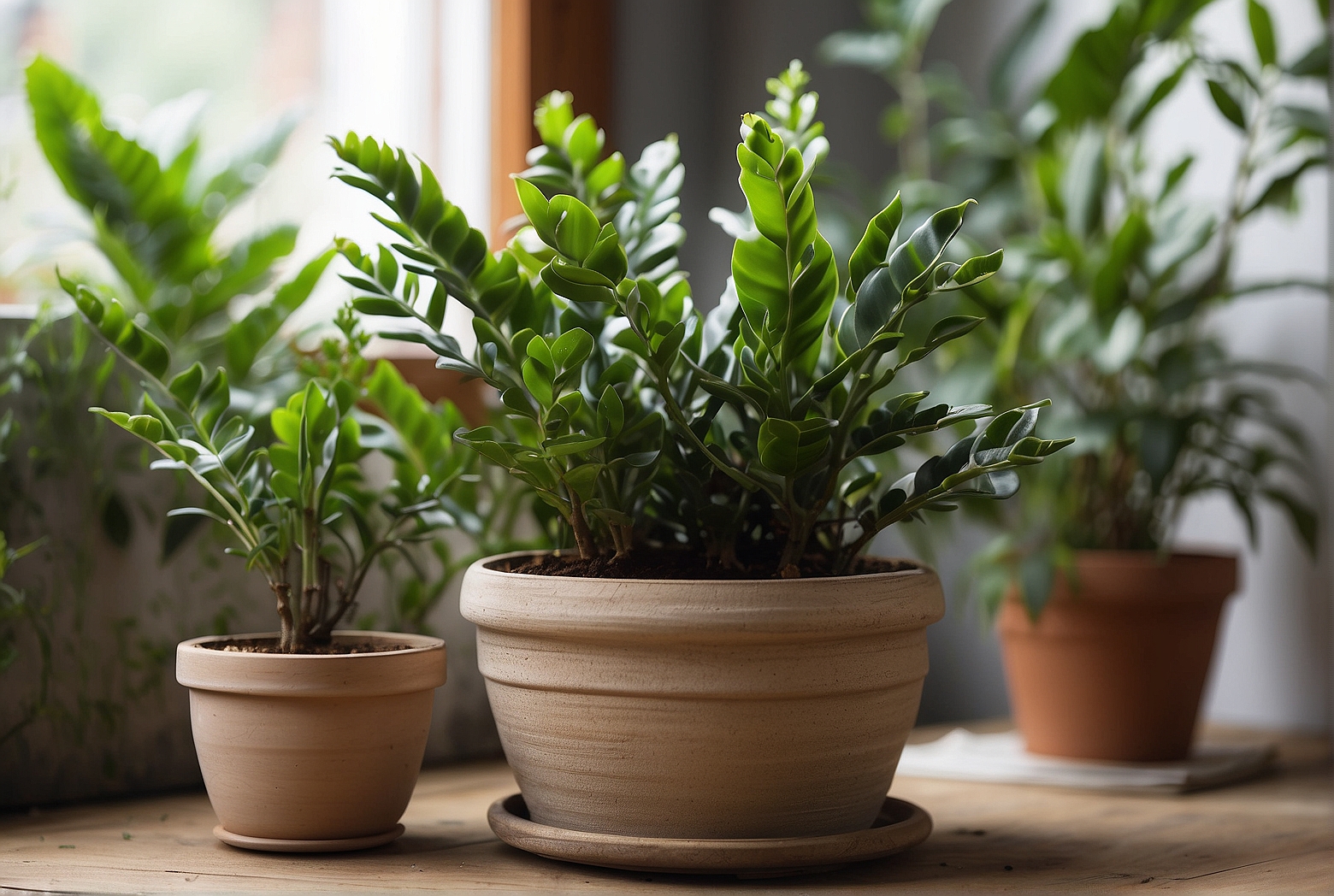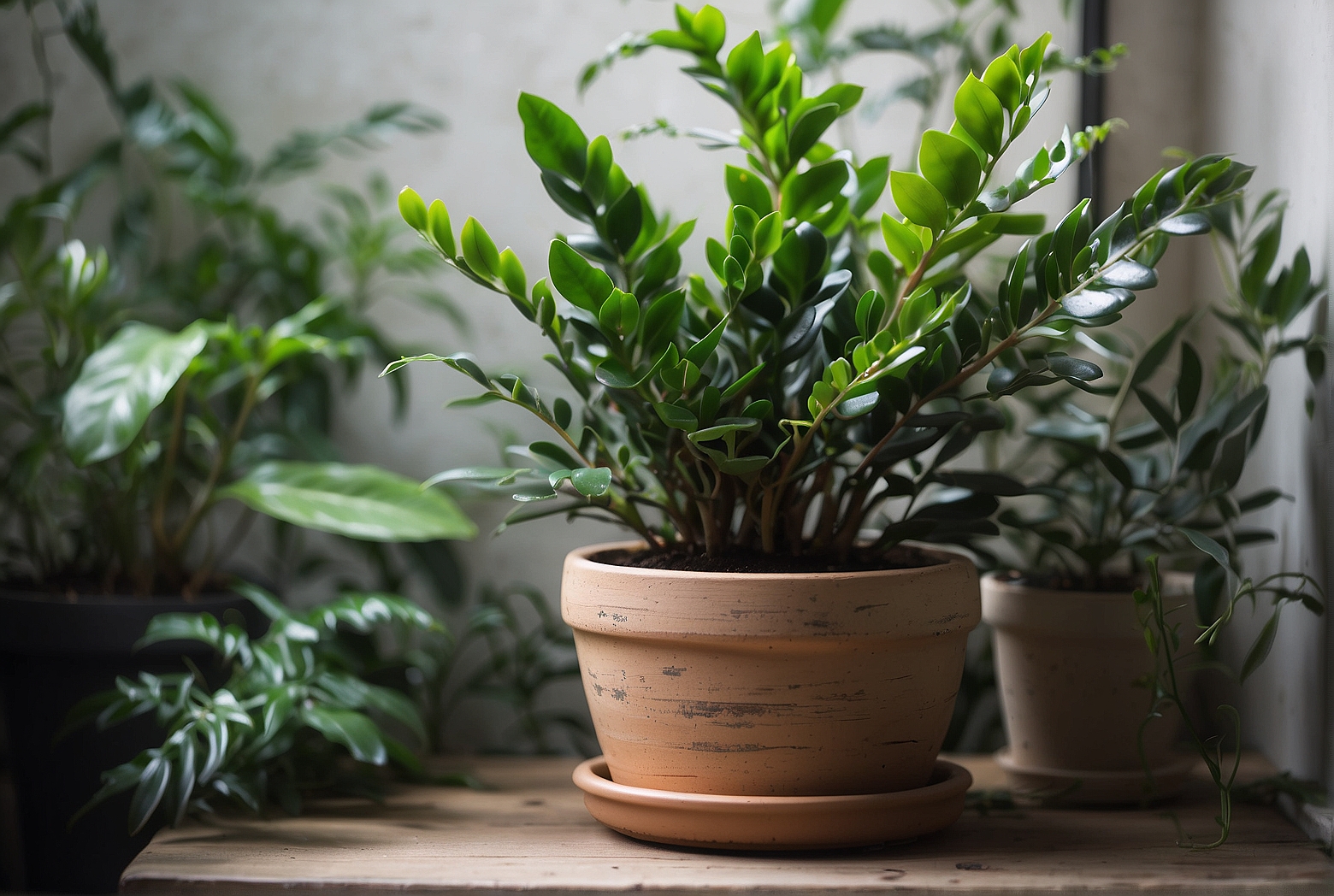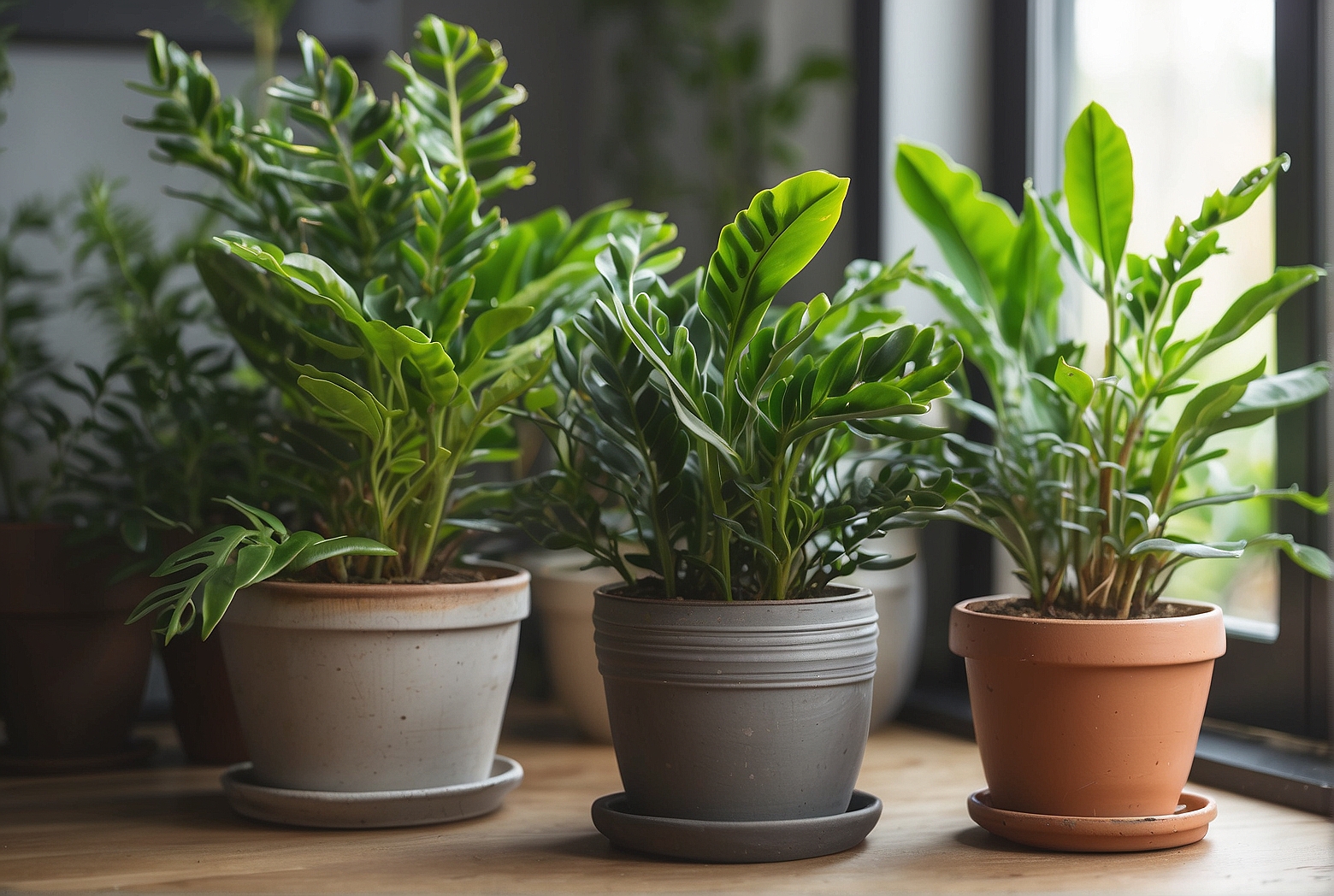Last Updated on March 30, 2024 by Tony Manhart
So you have just brought home a beautiful ZZ plant and now you’re wondering how to take care of it. Well, you’re in luck because I’m here to give you some friendly advice on how to keep your ZZ plant happy and thriving. From proper watering techniques to finding the perfect spot for your plant, I’ll guide you through all the necessary steps to ensure your ZZ plant grows big and healthy. So let’s get started and make sure your green friend flourishes in your home!
Choosing the Right Location
When it comes to caring for ZZ plants, choosing the right location is an essential factor to consider. These beautiful plants thrive best in bright, indirect light. It is important to place your ZZ plant in a spot where it can receive adequate light without exposure to direct sunlight. The foliage of ZZ plants can burn if exposed to too much sun, so it is crucial to avoid placing them in direct sunlight.
Providing Adequate Light
ZZ plants love bright, indirect light, so it’s essential to provide them with the right amount of illumination. Ideally, place your ZZ plant near a north or east-facing window, where it can receive bright, indirect light throughout the day. If you notice that the leaves are stretching towards the light or turning pale, it may be an indication that your plant needs more light. In such cases, consider moving it closer to a window or providing artificial lighting.
Watering Requirements
Determining the correct watering regimen for your ZZ plant is crucial for its overall health. Before watering, always check the moisture level of the soil. ZZ plants prefer to slightly dry out between waterings, so it is essential to let the top few inches of soil dry out completely before watering again. Overwatering can lead to root rot and other issues, so it’s important to avoid keeping the soil excessively moist.

Checking Soil Moisture
To check the moisture level of the soil, insert your finger about an inch into the soil. If it feels dry at that depth, it’s time to water your ZZ plant. On the other hand, if the soil feels moist, it is best to wait a few more days before watering. Remember to water your ZZ plant thoroughly, allowing the water to trickle through the drainage holes at the bottom of the pot.
Watering Frequency
The watering frequency will depend on various factors such as the size of the pot, the type of soil, and the environmental conditions. Generally, ZZ plants require watering every two to three weeks during the growing season and less frequently during the winter months when their growth slows down. Pay attention to the specific needs of your plant and adjust the watering frequency accordingly.
Temperature and Humidity
Maintaining the ideal temperature range and humidity levels is crucial for the well-being of your ZZ plant. These hardy plants thrive in average room temperatures between 60°F and 75°F (15°C to 24°C). It’s important to avoid exposing your ZZ plant to extreme temperature fluctuations and drafts, as they can cause stress to the plant.
Ideal Temperature Range
ZZ plants are tolerant of various temperature conditions, but they prefer to be kept in a warm environment. Avoid placing them in areas that are excessively cold or near air conditioning vents that might expose them to chilly drafts. Keeping your ZZ plant in a temperature range of 65°F to 75°F (18°C to 24°C) will provide optimal conditions for growth.

Maintaining Optimal Humidity Levels
ZZ plants are adaptable to different humidity levels, but they generally prefer moderate humidity. If the air in your home is particularly dry, you can increase humidity levels around your ZZ plant by placing a tray with water near it or by using a humidifier. However, be cautious not to allow excessive moisture to accumulate on the leaves, as it can lead to fungal problems.
Potting and Soil
Choosing the right pot and using the appropriate soil mixture are crucial for the healthy development of your ZZ plant. Here are some tips to consider when potting your ZZ plant:
Choosing the Right Pot
Selecting a pot with drainage holes is essential to prevent water from stagnating and potentially causing root rot. A pot with a diameter that allows room for growth is ideal, as ZZ plants don’t like to be too confined in their containers. Additionally, using a pot with a size that matches the plant’s growth will help stabilize the plant and prevent it from tipping over.
Potting Mix Recommendation
ZZ plants thrive in well-draining soil mixtures. A recommended mix consists of equal parts of a good-quality potting soil, perlite, and peat moss. This blend provides adequate drainage while retaining enough moisture to support healthy root growth. Avoid using heavy soils or those that retain excessive water, as they can cause root rot and other issues.
Fertilizing ZZ Plants
Proper fertilization is an important aspect of ZZ plant care, as it helps provide essential nutrients for growth. Here are some key considerations when it comes to fertilizing your ZZ plant:
Frequency and Timing
ZZ plants benefit from regular fertilization during the growing season, which typically spans from spring to summer. Fertilize your ZZ plant every two to three months using a balanced houseplant fertilizer. During the dormant period in fall and winter, it is generally best to reduce or withhold fertilization, as the plant’s growth slows down.
Choosing the Right Fertilizer
Select a well-balanced houseplant fertilizer formulated specifically for indoor plants. Look for one with a ratio of equal parts nitrogen, phosphorus, and potassium (e.g., 10-10-10 or 20-20-20). Follow the manufacturer’s instructions for proper dilution and application rates. Overfertilization can be harmful to ZZ plants, so it’s important to avoid applying too much fertilizer.
Pruning and Trimming
Regular pruning and trimming are essential for maintaining the health and appearance of your ZZ plant. Here are some guidelines to follow:
Removing Dead or Yellow Leaves
As part of regular maintenance, inspect your ZZ plant for any dead or yellow leaves. Gently remove these leaves by cutting them off at their base using clean, sharp pruning shears. This helps improve the overall aesthetics of the plant and prevents the spread of diseases.
Controlling Growth
If your ZZ plant becomes too large or leggy, you can trim back the stems to promote bushier growth. Prune individual stems just above a leaf node, which is the point where a leaf emerges from the stem. This will encourage new growth and help maintain a compact shape.
Propagation Methods
If you wish to expand your collection of ZZ plants or share them with friends, propagation is a great option. There are a few methods you can use to propagate your ZZ plant:
Division
Propagating by division involves separating a mature ZZ plant into two or more separate plants. Carefully remove the plant from its pot, and gently divide the rhizomes (underground stems) into smaller sections, making sure each section has some roots. Replant the divided sections into individual pots, ensuring they are at the same depth as before.
Leaf Cuttings
Another method of propagation is through leaf cuttings. Select a healthy leaf and cut it into sections about 2-3 inches (5-7.5 cm) long, ensuring each section has a small portion of the leaf stem attached. Insert the leaf cuttings into moist potting soil and keep them in a warm, humid environment. Over time, new plants will emerge from the leaf sections, allowing you to transplant them into individual pots.
Common Pests and Diseases
While ZZ plants are generally resistant to most pests and diseases, it’s essential to be vigilant and address any issues promptly. Here are some common pests and diseases that can affect ZZ plants:
Identifying Pests
Keep an eye out for common houseplant pests such as mealybugs, spider mites, and scale insects. These pests can be identified by the presence of small, crawling insects or the presence of sticky residue on the leaves. If you notice any signs of pest infestation, treat your ZZ plant with an appropriate insecticidal soap or oil according to the manufacturer’s instructions.
Treating Common Diseases
ZZ plants can occasionally be susceptible to root rot and fungal infections if exposed to excessive moisture or poor drainage. To prevent these issues, ensure that the pots have drainage holes, and avoid overwatering. If you notice signs of root rot, such as wilting leaves or a foul smell, gently remove the affected parts and repot the plant in fresh, well-draining soil.
Troubleshooting
Here are solutions to two common issues ZZ plant owners may encounter:
Wilting Leaves
Wilting leaves can be a sign of either overwatering or underwatering. Assess the moisture level of the soil and adjust your watering accordingly. If the soil is dry, water the plant thoroughly, and allow excess water to drain through the pot’s drainage holes. If the soil is excessively moist, let it dry out before watering again.
Yellowing Leaves
Yellowing leaves usually indicate a problem with watering or lighting. Ensure you are providing the right amount of light without exposing the plant to direct sunlight. Check the moisture level of the soil, as overwatering can lead to yellowing leaves. If necessary, adjust your watering routine and ensure the plant is potted in well-draining soil.
ZZ Plant Toxicity
One important aspect to consider is that ZZ plants are toxic when ingested, making it essential to keep them away from children and pets. The plant contains compounds that can cause stomach discomfort, nausea, and vomiting if consumed. If you have small children or curious pets, it is advised to keep your ZZ plant in a location that is inaccessible to them.
Caring for ZZ plants is a rewarding experience that can bring a touch of greenery into any home or office space. By following these care guidelines and paying attention to the specific needs of your plant, you can ensure that your ZZ plant thrives and brings you joy for years to come. Remember, with the right location, appropriate watering, proper potting, and regular maintenance, your ZZ plant will continue to flourish and become a stunning addition to your indoor plant collection.
Tony Manhart is a passionate gardener who has been tending to gardens for over 20 years. He takes pride in creating beautiful outdoor spaces with plants, trees, and shrubs that can thrive in any environment. He loves to share his knowledge with others and has taught classes on gardening basics and advanced techniques. He is committed to sustainability, using natural and organic methods to create and maintain gardens. He also works with local organizations to create green spaces for communities. When he’s not gardening, Tony enjoys hiking, reading, and spending time with his family.


